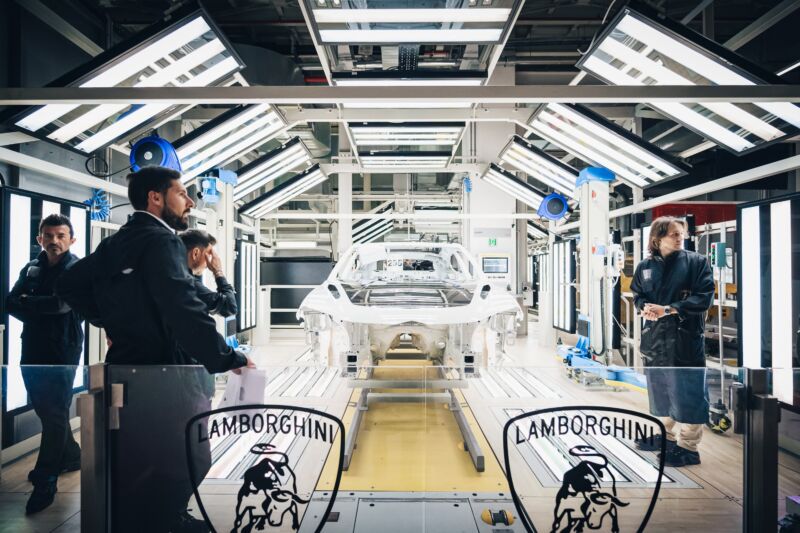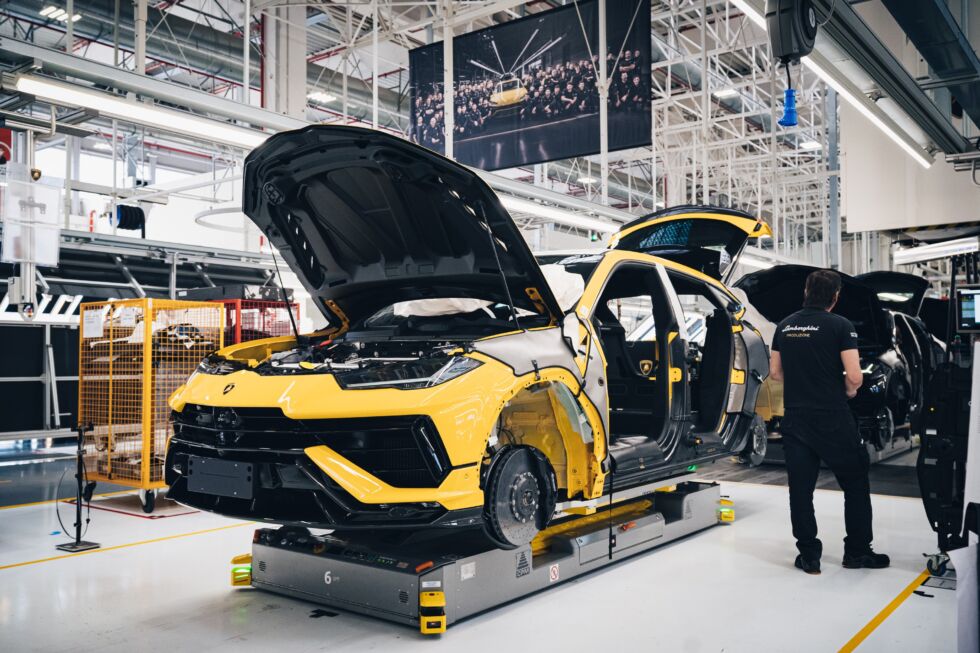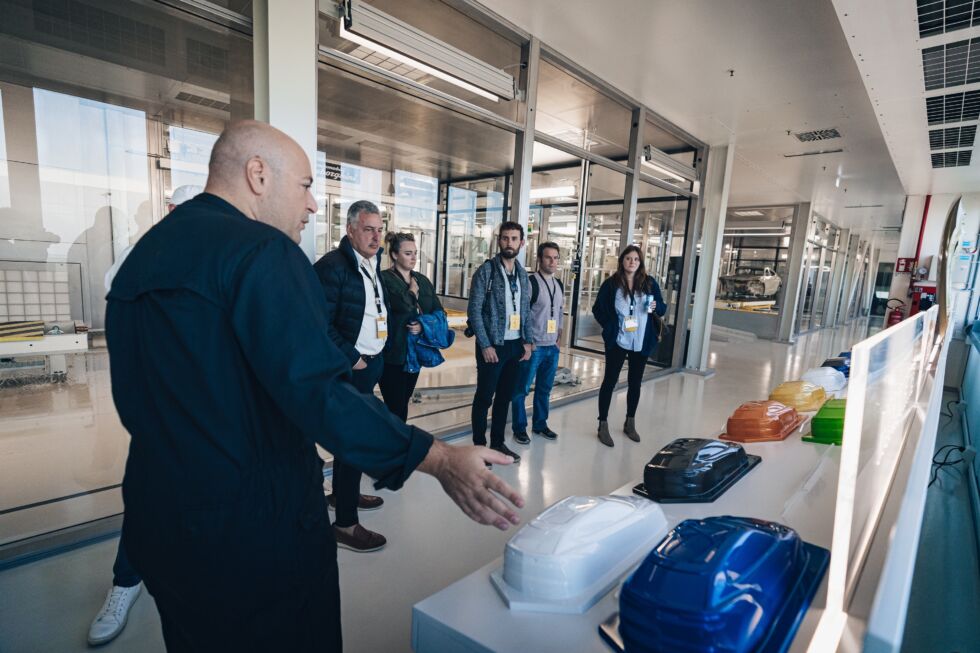
Lamborghini
Approximately 200 miles north of Rome, outside Bologna, lies the small town of Sant’Agata Bolognese, notable as the home of Automobili Lamborghini S.p.A. I recently visited the town and factory, ostensibly to learn about Lamborghini’s early sustainability efforts as the supercar manufacturer transitions to hybridization and electrification over the next few years. But first, Lambo put that step into context by dropping me into a V12-powered Aventador SVJ for a drive through the Italian countryside.
A jaunt through busy Bologna and the surrounding roads in such a track-focused Aventador quickly reveals the soul of Lamborghini as an automaker—raucous and enervating, all drama and sensory overload from start to finish. At first, the SVJ nags me as I upshift too soon or downshift too aggressively, but familiarity begins to inspire confidence.
Stop-start traffic in this car borders on torture. Italian traffic impinges upon any hopes of driving at speed. Instead, stuck in lines of unidentifiable hatchbacks never sold in the United States, I navigate narrow roundabouts and merging lanes pinched by barricades and balustrades at nearly every intersection.
The packaging requirements of a 670 hp (500 kW) supercar with a massive V12 mounted amidships, optimized aerodynamics, and maximized traction take priority over comfort. My head fully contacts the cockpit’s low ceiling unless I hunch forward; the carbon buckets are as firm and tight as race seats—even the infotainment being in Italian means I can’t turn on music as a distraction, though many might argue that the V12 should suffice.

Lamborghini
That 6.7 L engine agrees, spitting and snarling, almost stalling as the automated seven-speed transmission lurches through traffic. I switch the recalcitrant gearbox over to M, hoping the temper tantrum will smooth out higher in the rev range as I purposefully pop through gears using the column-mounted paddle shifters (which also make the Aventador’s turn signal stalks nearly impossible to use). And those turn signals come in handy—as the crowd of Italian drivers inching along all around me might be surprised to learn—since I have absolutely zero visibility to either side, nor out of the louvered rear window.
Lamborghini’s infamous fighter jet push-start button begins to make sense all of a sudden. After all, military engineers make zero considerations for pilot comfort: “Don’t think, just go get ’em, Mav!”
For a track car—a raw, road-going racecar that managed to set a Nürburgring-Nordschleife production vehicle lap record of 6:44.97 back in 2018—the SVJ’s steering is surprisingly vague at the speeds allowed among the general public, especially in contrast to such stiff suspension. Some cars make 90 mph (145 km/h) feel like 60 (96 km/h); an Aventador makes 60 feel like 90.
After 12 years of production, the Aventador now faces obsolescence approximately five years too late. Lamborghini’s presentation to start the day confirmed that hybrid Aventador and Huracan replacements are on the way—though not using the innovative super-capacitor drivetrains of the Sian and Countach special editions. Every model in the current lineup will go hybrid by next year, in fact, before full electrification by 2028, starting with the Volkswagen AG-shared Urus and followed closely by a fourth model, dubbed the Lanzador, that will introduce the Raging Bull’s unique electric vision to the world.
Efforts to promote production efficiency
While media coverage and fan focus might pin this steady march on governmental regulations surrounding the carbon emissions of internal combustion engines, Lamborghini has for years focused on ways to reduce the environmental impact of building such stupendously powerful cars at its facility in Sant’Agata Bolognese.

Lamborghini
The efforts go far beyond the application of reusable packing for shipping componentry or recycling excess material from leather upholstery and carbon-fiber trim. Rail freight delivery of Urus bodies from VW in Germany alone reduced CO2 emissions by 85 percent (versus trucking) and a district hot water heating system that can handle the entire yearly demands of every home in Sant’Agata helped Lambo obtain CO2 neutral certification for the entire plant back in 2015.

